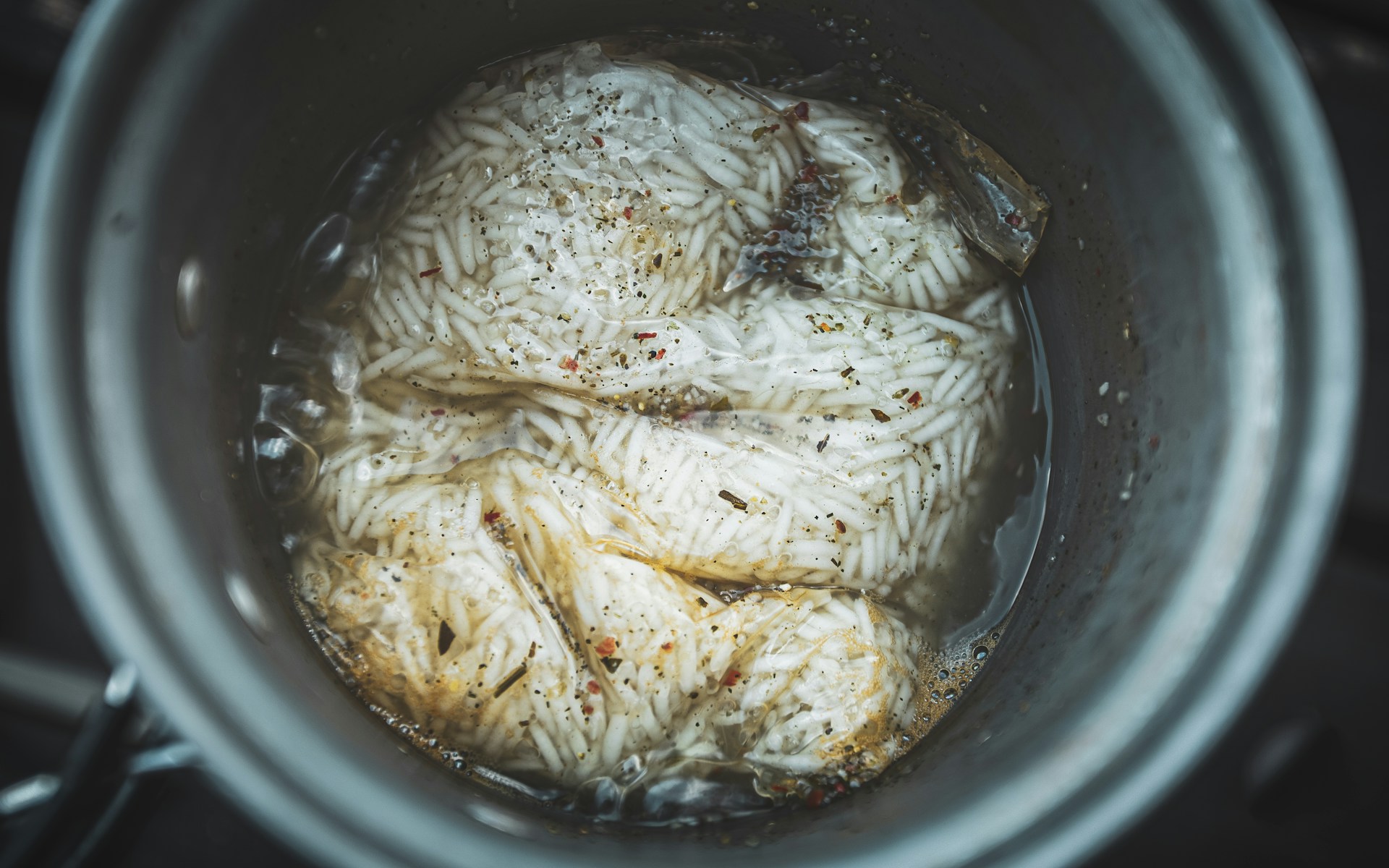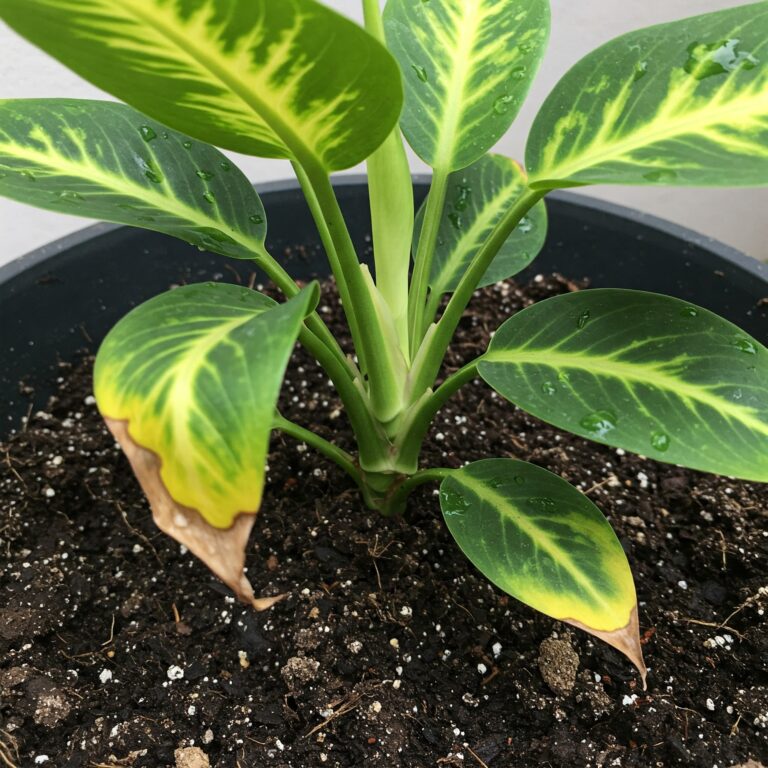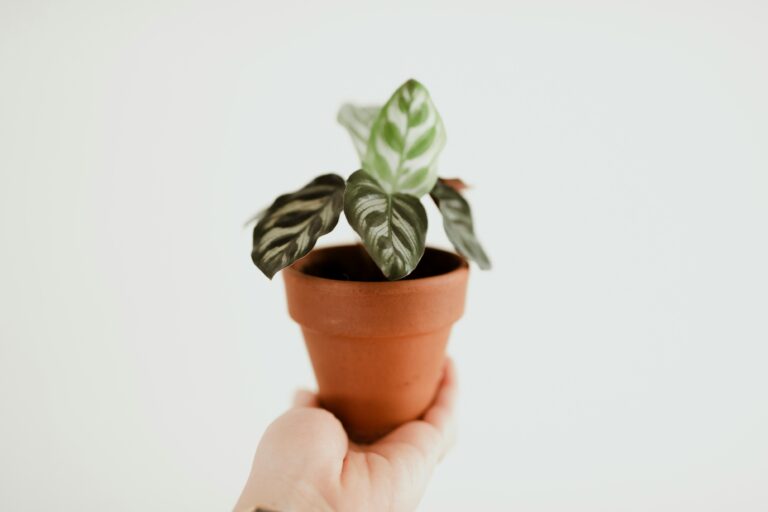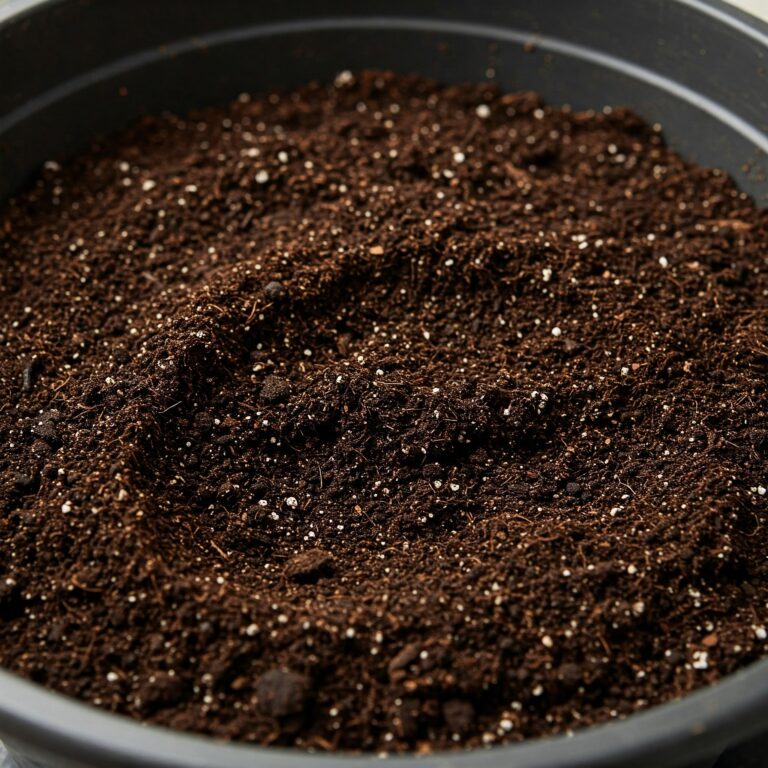Gardening enthusiasts and houseplant aficionados are always on the lookout for natural and sustainable methods to enhance plant health and growth. One such method that has gained popularity is the use of rice water. This simple, cost-effective solution can be a game-changer for your plants, providing essential nutrients that promote vibrant foliage and robust root systems.
Rice water, the starchy liquid left after rinsing or boiling rice, is rich in vitamins, minerals, and amino acids that are beneficial for plant growth. Instead of discarding this nutrient-laden water, it can be repurposed as an organic fertilizer. The use of rice water for plants is not only an environmentally friendly practice but also an excellent way to make the most out of everyday kitchen waste.
This guide will look into the benefits of using rice water for your plants, how to prepare it, and the best practices for application. Learning how to use rice water can help you cultivate healthier, more resilient plants naturally.
Benefits of Rice Water for Plants
Nutrient-Rich Fertilizer
Rice water is a treasure that contains nutrients that can significantly benefit plant health. It contains essential vitamins such as B1 (thiamine), B3 (niacin), and B6, which play important roles in various plant metabolic processes.
Additionally, the presence of minerals like magnesium, potassium, and phosphorus helps strengthen plant roots, improve flowering, and boost overall growth. These nutrients act as natural fertilizers, promoting vigorous and healthy development without the need for synthetic chemicals.
Enhanced Microbial Activity
The starchy content of rice water serves as an excellent food source for beneficial microorganisms in the soil. These microorganisms, in turn, enhance soil fertility by breaking down organic matter and converting it into forms that plants can easily absorb.
This symbiotic relationship between plants and soil microbes leads to improved nutrient uptake, healthier root systems, and increased resistance to diseases. By fostering a thriving microbial ecosystem, rice water helps create a more balanced and sustainable growing environment.
Improved Soil Structure
Regular application of rice water can contribute to better soil structure and aeration. The starches in rice water help bind soil particles together, improving soil aggregation and preventing compaction.
This enhanced soil structure allows for better water retention and drainage, ensuring that plant roots receive adequate moisture without becoming waterlogged.
Well-aerated soil also facilitates root respiration and nutrient absorption, leading to more robust and resilient plants.
Cost-Effective and Sustainable
Using rice water as a plant fertilizer is not only beneficial for plant health but also economically and environmentally sustainable. It repurposes a common kitchen byproduct, reducing waste and minimizing the need for commercial fertilizers.
This practice aligns with sustainable gardening principles, promoting resourcefulness and reducing the environmental impact of gardening activities.
Pest and Disease Resistance
There is evidence to suggest that rice water can enhance a plant’s natural defense mechanisms against pests and diseases. The beneficial microorganisms supported by rice water can outcompete harmful pathogens, reducing the incidence of soil-borne diseases.
Additionally, the nutrients in rice water help strengthen plant cell walls, making them less susceptible to insect damage and fungal infections. This natural boost to plant immunity contributes to a healthier garden with fewer chemical interventions.
How to Make Rice Water for Plants
Making rice water for plants is a simple process. There are three primary methods:
- Using the water from rinsing rice
- The water left over from boiling rice
- Using fermented rice water.
These methods yield nutrient-rich rice water that can benefit your plants.
Using Rinsed Rice Water
- Select Your Rice: Any type of rice can be used, including white, brown, or jasmine rice.
- Measure and Rinse:
- Measure out the amount of rice you need for cooking.
- Place the rice in a bowl or container and add enough water to cover the rice.
- Swirl the rice around with your hand or a spoon to release the starches and nutrients.
- The water will become cloudy; this is your nutrient-rich rice water.
- Collect the Water:
- Pour the cloudy water into a separate container, ensuring that you leave the rice behind.
- You can repeat the rinsing process once more for additional rice water, although the first rinse is usually the most nutrient-dense.
- Store and Use:
- Store the collected rice water in a sealed container.
- Use the rice water immediately or within a few days to ensure its effectiveness.
Using Boiled Rice Water
- Cook the Rice:
- Cook your rice as usual, using a 1:2 rice-to-water ratio. The water should be saltless
- Once the rice is fully cooked, strain the excess water into a separate container.
- Cool the Water:
- Allow the boiled rice water to cool completely before using it on your plants.
- Ensure that the water is at room temperature to avoid damaging your plants.
- Store and Use:
- Store the cooled rice water in a sealed container if you don’t use it immediately.
- Use the rice water within a few days to ensure its nutrient content is still potent.
Fermented Rice Water
- Rinse the Rice:
- Place a cup of rice in a bowl or container and cover it with water.
- Swirl the rice around to release the starches and nutrients, making the water cloudy.
- Collect the Water:
- Strain the rice water into a jar or bottle, leaving the rice behind.
- Fermentation Process:
- Seal the Container: Cover the jar or bottle loosely with a lid or cloth to allow air exchange but prevent contamination.
- Ferment: Let the rice water sit at room temperature for 24-48 hours. The water will start to ferment, developing a slightly sour smell. This indicates the presence of beneficial bacteria.
- Monitor: Check the water daily. If it smells unpleasantly sour or develops mold, discard it and start over. A mildly sour, fermented smell is what you are aiming for.
- Strain and Store:
- After 24-48 hours, strain the fermented rice water into another container to remove any solids.
- Store the fermented rice water in a sealed container in the refrigerator if not using immediately. It can be stored for up to a week.
How to Apply Rice Water to Plants
- Dilution (Optional):
- Depending on the concentration of the rice water, you may choose to dilute it with an equal amount of plain water to avoid overwhelming your plants with too many nutrients at once.
- Water Your Plants:
- Use the rice water as you would regular water, pouring it directly onto the soil around the base of your plants.
- Ensure that the soil is evenly moist but not waterlogged.
- Frequency:
- Apply rice water to your plants once a week or every two weeks, depending on their needs and how they respond to the treatment.
How Rice Water Can Harm Plants
While rice water can offer numerous benefits for plant growth and soil health, it’s important to understand that improper use can potentially harm your plants.
Here are some ways rice water can negatively impact your plants.
Nutrient Imbalance
Rice water is rich in certain nutrients like starches, but it lacks a balanced mix of all essential nutrients that plants need. Over-reliance on rice water as a sole fertilizer can lead to deficiencies in other vital nutrients such as nitrogen, phosphorus, and potassium.
This imbalance can result in poor plant growth, yellowing leaves, and reduced flowering or fruiting. To prevent this, use rice water as a supplement to, rather than a replacement for, a balanced fertilization routine.
Overwatering and Root Rot
Using rice water excessively or too frequently can lead to overwatering, which is detrimental to plant health. Excess moisture in the soil can suffocate plant roots, leading to root rot and other fungal diseases.
The starches in rice water can also contribute to an anaerobic environment if the soil remains too wet, further exacerbating root issues. To avoid this, apply rice water sparingly and ensure that your plants have adequate drainage.
Risk of Pathogen Growth
Fermented rice water, while beneficial in moderation, can sometimes promote the growth of harmful pathogens if not prepared or stored correctly. Contamination during the fermentation process or using rice water that has been fermented for too long can introduce unwanted bacteria or fungi into the soil.
This can lead to plant diseases and soil health problems. Always ensure that fermented rice water smells mildly sour, not foul, and discard any rice water that shows signs of mold or excessive fermentation.
Salt Accumulation
Rice water, particularly from boiled rice, can contain small amounts of salt, especially if salt was added during cooking. Over time, the accumulation of salt in the soil can harm plant roots, inhibit nutrient uptake, and lead to leaf burn or other salt stress symptoms.
To mitigate this risk, always use unsalted rice water and consider diluting it with plain water before application.
Attracting Pests
The starches and sugars in rice water can attract pests such as ants, gnats, and other insects if not properly managed. These pests can damage plants directly by feeding on leaves, stems, or roots, or indirectly by introducing diseases.
To minimize pest attraction, apply rice water directly to the soil and avoid getting it on the leaves or stems of the plants. Additionally, clean up any spills promptly to deter pests.
Plants That Shouldn’t Be Watered With Rice Water
While rice water can benefit many plants, some types of plants may not respond well to its application. Here are examples of plants that generally shouldn’t be watered with rice water:
- Cacti and Succulents: These plants are adapted to thrive in arid conditions with well-draining soil. Rice water, especially if not diluted properly, can lead to overwatering and root rot in these plants.
- Plants Sensitive to Moisture: Plants that are particularly sensitive to excessive moisture, such as certain types of ferns (e.g., maidenhair ferns) and mosses, may not tolerate rice water well. It can lead to soggy soil conditions that these plants are not adapted to handle.
- Plants in Cold Climates: In colder climates or during cooler seasons, plants generally require less frequent watering. Rice water can contribute to excess moisture in the soil, which may not be beneficial during these periods and could potentially lead to root issues.
- Plants Prone to Fungal Diseases: Plants that are susceptible to fungal diseases, such as certain types of roses or vegetables like tomatoes and cucumbers, may be at increased risk if rice water contributes to overly moist conditions. Fungal pathogens thrive in damp environments and can affect plant health negatively.
- Plants Growing in Already Moist or Waterlogged Soil: Plants that are growing in soil that is consistently moist or prone to waterlogging (e.g., clay soils) may not benefit from additional moisture from rice water. It can exacerbate existing drainage issues and lead to root suffocation or disease.
- Plants in Containers without Drainage Holes: Plants grown in containers without adequate drainage holes can easily become waterlogged. Rice water, if not carefully applied, can worsen this problem and compromise the health of container-grown plants.
- Plants Requiring Specific Soil Conditions: Certain plants, like those that prefer acidic soils (e.g., blueberries, rhododendrons), may not benefit from the alkalizing effects that some types of rice water can have on soil pH.
Conclusion
Incorporating rice water into your plant care routine can be a rewarding and sustainable way to promote healthier, more vibrant plants. Whether you choose to use rinsed rice water or fermented rice water, the nutrients and beneficial microorganisms it provides can support robust growth and improve soil fertility.
However, it’s essential to use rice water judiciously and in moderation, taking into account the specific needs of your plants and adjusting the application frequency and concentration as necessary.





